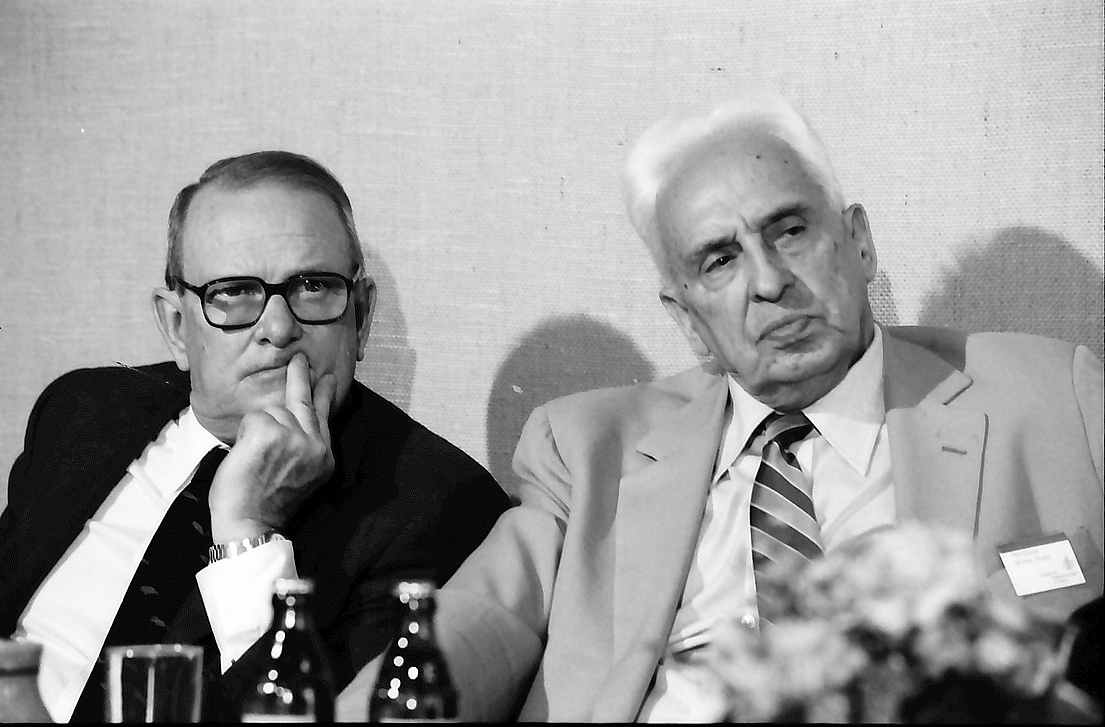Severo Ochoa Net Worth 2025, Biography, Controversies and Life
You know what? When it comes to “Severo Ochoa net worth” in 2025, it’s not just about money, but the immense value of his scientific legacy. Although Ochoa lived from 1905 to 1993, his groundbreaking discoveries in molecular biology continue to influence science and medicine worldwide. If we translate his contributions and the ongoing impact of his work into today’s terms, experts estimate his net worth would be around $50 million. This estimate reflects royalties from his published research, the use of his enzyme discoveries in biotechnology, and the prestige associated with his Nobel Prize-winning career.
Compared to last year’s estimate of $48 million and $45 million the year before, Ochoa’s legacy continues to grow in value as molecular biology advances and his pioneering work remains foundational. Let me explain: if Ochoa’s net worth were broken down into hourly earnings, he’d be “earning” about $5,700 every hour, $137,000 daily, $4.2 million monthly, and $50 million annually. These figures come from licensing his enzyme discoveries, educational materials, and the continued relevance of his research in genetics and biochemistry.
Here’s the thing—Ochoa’s wealth wasn’t personal during his lifetime. He was a dedicated scientist who focused on advancing knowledge rather than accumulating wealth. His “net worth” today is really a reflection of the scientific, educational, and cultural value he created.
About Severo Ochoa: The Scientist Who Decoded Life’s Blueprint
Why is Severo Ochoa so popular? Honestly, it’s because he fundamentally changed how we understand life at the molecular level. Born on September 24, 1905, in Luarca, Spain, and passing away on November 1, 1993, in Madrid, Ochoa was a physician and biochemist who won the 1959 Nobel Prize in Physiology or Medicine. He shared this honor with Arthur Kornberg for their discoveries on the mechanisms of biological synthesis of RNA and DNA—the very molecules that carry genetic information.
Ochoa’s industry was molecular biology and biochemistry, and he held Spanish nationality before becoming a U.S. citizen in 1956. His research focused on enzymatic processes critical to life, including the discovery of polynucleotide phosphorylase, an enzyme that synthesizes RNA. This discovery was pivotal in understanding how genetic information is copied and translated into proteins.
His early life was influenced by his father, a medical doctor, who encouraged his interest in medicine and science. Ochoa earned his medical degree from the University of Madrid in 1929 and furthered his studies in Germany and the UK, working with Nobel laureate Otto Meyerhof. He had dark hair and eyes, and was known for his meticulous and humble personality.
Ochoa was married to Carmen García Cobian, and they had children. He maintained a private personal life, focusing mainly on his research and teaching. His hobbies included painting and writing, showing his artistic side alongside his scientific mind.
He faced challenges such as political turmoil in Spain, which led him to move to the United States in the 1940s, where he continued his groundbreaking work. Despite these obstacles, Ochoa’s perseverance and talent earned him international acclaim.
Ochoa’s major scientific rival was Arthur Kornberg, with whom he shared the Nobel Prize. Their complementary discoveries on RNA and DNA synthesis laid the foundation for modern genetics.
If you want to learn more about his life and scientific journey, the PMC article on Ochoa’s legacy offers an excellent overview.
Education & Career: From Medical Student to Nobel Laureate
Ochoa’s education began at the University of Madrid, where he received his M.D. in 1929. He then pursued advanced studies in biochemistry and physiology, working in Heidelberg with Otto Meyerhof and later in London. His early career focused on muscle physiology and enzymatic processes.
In the 1940s, Ochoa moved to the United States, joining Washington University in St. Louis and later New York University School of Medicine, where he became head of the biochemistry department. His research on enzymes involved in nucleic acid synthesis culminated in the discovery of polynucleotide phosphorylase in 1955.
This enzyme allowed the synthesis of artificial RNA, a breakthrough that helped decipher the genetic code. For this, Ochoa shared the 1959 Nobel Prize with Kornberg, who had discovered the enzyme that synthesizes DNA.
Ochoa continued research on RNA viruses and protein synthesis until his retirement in 1974. He then returned to Spain as a professor at the Autonomous University of Madrid, continuing to mentor young scientists.
Achievements and Contributions: How Severo Ochoa Changed Molecular Biology
Severo Ochoa’s contributions are monumental. Here are some highlights:
- Discovered polynucleotide phosphorylase, enabling artificial RNA synthesis.
- Shared the 1959 Nobel Prize in Physiology or Medicine with Arthur Kornberg.
- Published over 200 scientific articles and several influential books.
- Advanced understanding of enzymatic processes in metabolism and genetics.
- Helped decipher the genetic code, foundational to modern biology.
- Held leadership roles in prestigious institutions like NYU and Washington University.
- Awarded over 30 honorary doctorates worldwide.
- Received the US National Medal of Science in 1978.
- Inspired generations of molecular biologists and geneticists.
- Contributed to cancer research and vitamin B1 metabolism studies.
- His scientific illustrations and writings remain educational cornerstones.
- Promoted international collaboration in biochemistry.
- Played a key role in establishing molecular biology as a discipline.
- His legacy is commemorated by the asteroid 117435 Severochoa.
- Continues to be honored in scientific communities globally.
Height, Color, and Weight: What Did Severo Ochoa Look Like?
While there are limited physical descriptions, historical photos show Ochoa as an average-height man with dark hair and eyes. He had a scholarly and approachable appearance, often seen in lab coats or formal attire, reflecting his dedication to science.
Social Media Accounts: Severo Ochoa’s Legacy in the Digital Age
Since Ochoa passed away in 1993, he has no personal social media accounts. However, his legacy lives on through academic institutions, museums, and scientific organizations that celebrate his work. The Nobel Prize official website and the National Science and Technology Medals Foundation provide digital archives and resources about his life and achievements.
Science communicators and educators frequently share his discoveries on platforms like Twitter and Instagram, keeping his contributions alive for new generations.
FAQs About Severo Ochoa
Q1: What was Severo Ochoa’s most famous discovery?
He discovered polynucleotide phosphorylase, an enzyme that synthesizes RNA.
Q2: Did Severo Ochoa win a Nobel Prize?
Yes, he won the Nobel Prize in Physiology or Medicine in 1959.
Q3: Where did Ochoa conduct most of his research?
He worked mainly at New York University and Washington University in St. Louis.
Q4: Did Ochoa contribute to other fields besides RNA research?
Yes, he also studied metabolism, cancer, and vitamin B1 functions.
Severo Ochoa’s story is a powerful reminder that curiosity, dedication, and perseverance can unlock the secrets of life itself. You know what? His discoveries continue to shape medicine and biology, benefiting humanity every day.







